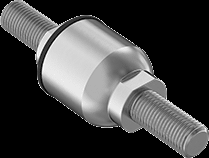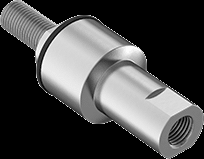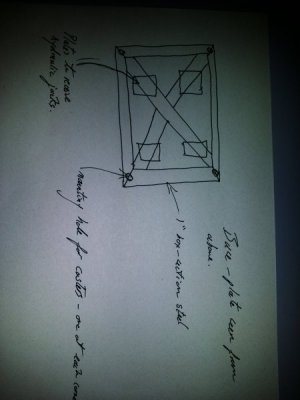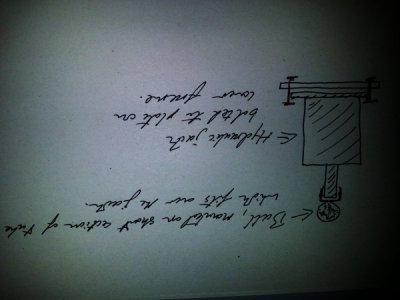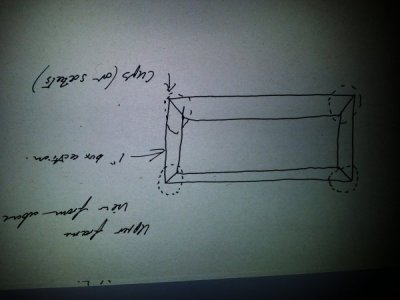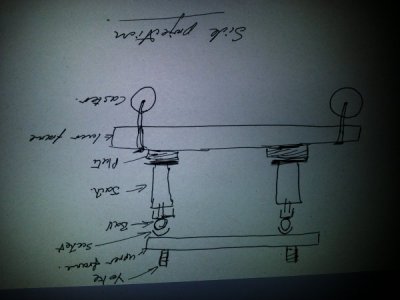Gentlemen,
Thank you all for your advice. I suspect that I may not have quite explained the nature of the problem, from some of your posts. A Land Rover gearbox, bolted to its transfer unit, is too heavy for me to lift. I can *just* lift one end at a time to ease it onto a dolly. I am 6'4" tall, weigh over 200 lb and lead a fairly active lifestyle.
The actual weight quoted depends on whether the handbrake drum and overdrive unit are fitted: around 70 to 75 kg seems to be an accepted figure, say 160 lb.
RJ: If you can lie down with one of these assemblies on your abdomen I shall buy you a beer and tell all of my friends!
Jason: thanks for the link, but that's not quite what I had in my head.
John: maybe, but I want something more hefty.
Canus: that's the idea but they'd have to be quite big.
John, Bear: I think that would do it, but I'd quite like to realize my own design, for the fun of it. Still, I'll see if Machine Mart sell anything similar.
John: "By the time you've engineered and built this contraption you could have changed the tranny a couple of times" possibly. It took me a whole day to get the seatbox and floor out; another day to remove the transmission (through the passenger door) then remove and modify the gearbox crossmember (so that it can now be unbolted); yet another day to get the replacement gearbox in and connected up... and my clutch has seized so that I need to take the whole thing apart again. I have three old Land Rovers and three old Range Rovers. The chances are that I'm going to be doing this, or something like it, once every year or two. Two days building my frame are not really significant and the time saving on the actual job could be considerable.
The recommended way of doing it involves using an engine crane to hoist the lump out through the passenger door and then the replacement is swung in the same way. It's a real pig of a job to do single-handed because the bellhousing has to line up with the engine studs and the shaft has to go straight in, so one ends up trying to tilt the gearbox in three directions at once and then get it to slide forwards to mate with the engine, without destroying anything. Or crushing fingers. From bitter experience, I find it easier to lower the engine into the engine bay and mate it with the transmission in situ. But I'm not doing an engine swap this time.
I think that all I need is a rectangle of steel box section with a caster at each corner. On each corner will sit one of my bottle jacks pushing a stout plate attached to a ball. Probably flanges on the plates to stop them from sliding off the jacks. On each ball will ride a cup and the four cups will be joined together by a second rectangle of box-section steel. Welded on to the top of the upper rectangle will be a pair of yokes on which the gearbox will rest (and safety chains because that does sound like a very good idea). I'll push the jig forwards with a screw jack once the orientation is bob-on.
Remember that my contraption is going to be rising up between the sides and crossmembers of the chassis. I don't think that it is likely to topple in use. It might be prudent to make the base relatively wide so that the thing doesn't collapse as it is pushed to/from the vehicle.
What I envisage, in future, is taking out the floor but leaving the seatbox in place; my modified removable gearbox-crossmember will be unbolted, The contraption will slide underneath, rise up to accept the transmission, lower it to the maximum extent; and the the vehicle will be jacked up to to allow the whole thing to be slid out from under. Replacement will simply be the reverse operation. No more transmissions swinging about on engine cranes and smashing into steering wheels, dashboards, handbrakes, exhausts and the like.
So: I'm hell-bent on my daft plan. Do I make my balls and sockets out of bronze or steel, do you think?
And thank you, again, for all of your ideas.
Kind wishes,
Nick
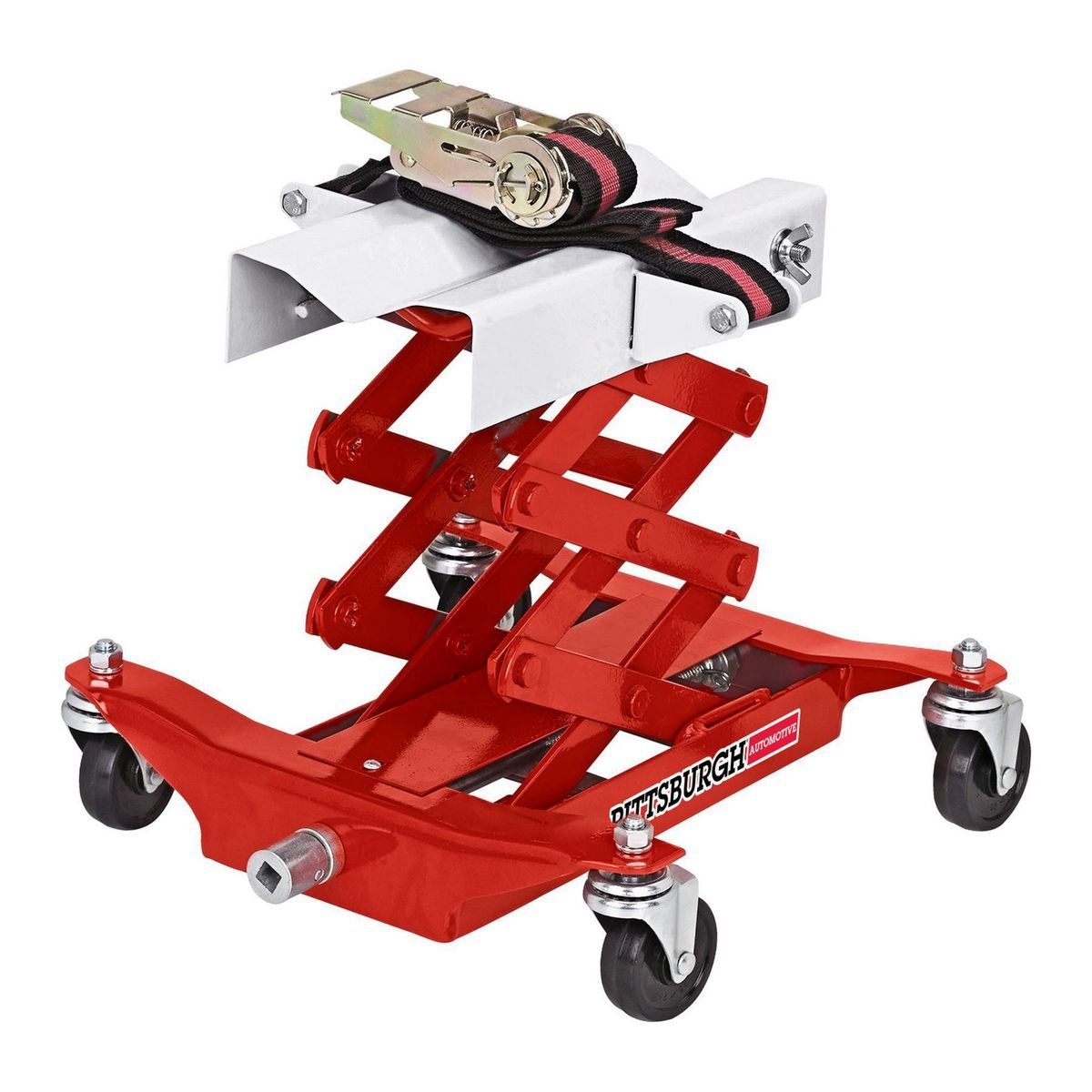
www.harborfreight.com


